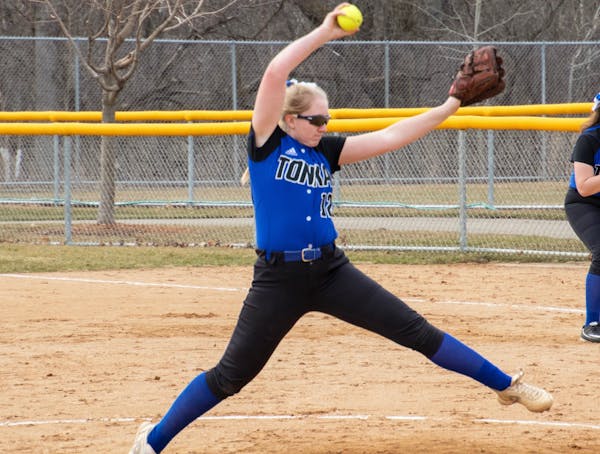Lacrosse sticks of various shapes, colors and cultural significance dotted Tillie Turner's childhood.
There were those unusual, primitive looking wood sticks made by her father, Dave, the ones her future lacrosse teammates called "the little circle sticks." The first sticks she used for play were red- and purple-colored plastic toys. Tillie Turner graduated to the real thing when she began playing lacrosse in fifth grade.
And that's when she began realizing how traditional lacrosse, the modern game and her Native American heritage intertwine.
"It feels like I have a back story, more of a connection to the modern game," said Turner, a freshman goalie on the Minneapolis varsity team.
She and Chaska Spears, a goalie for the Minneapolis boys' lacrosse team, share an interest in their cultural ties to lacrosse. Playing baseball without gloves or hockey on a frozen pond nods to those sports' humble beginnings. But lacrosse runs much deeper in the Native American community.
While rising through the ranks of their community lacrosse programs, both Turner and Spears, a junior, participated in Twin Cities Native Lacrosse, a community effort for young people to play the traditional game and learn its history.
"They're born with it; it's in their genes. So when they play it, they're just being who they are. They are just continuing what was taught to us," said John Hunter, a founder of TCNL in 2014.
About a year ago, the organization received a $50,000 grant from the Minnesota Super Bowl Host Committee Legacy Fund. Those funds furthered Hunter's mission to engage Native American youth and families in both traditional Dakota/Ojibwe lacrosse and modern lacrosse. The money helped provide free access to lacrosse equipment, transportation to practices and games, and participation in competitive league play, Hunter said.
Creating opportunity through lacrosse drove Stephanie Zadora, an assistant coach for the Minneapolis girls' varsity team, to help found TCNL. She grew up in Virginia and spent summers on the Cattaraugus Reservation in western New York. She recalled playing with "well-established lacrosse programs of all-native girls."
"We wanted to create players who had a connection to lacrosse," said Zadora, whose mother played the sport collegiately at Dartmouth and whose grandfather played at Cornell. "This is their sport. They shouldn't feel excluded even though for so long it's been a prep school sport.
"For a community, to be told for so long that we're not worthy or that our cultural practices should be banned, to reclaim our sport is a piece of reclaiming our culture."
Playing for Minneapolis, a co-op of the city's seven public high schools, leaves little time for Turner and Spears to play traditional lacrosse. Each plays a few times a year with their fathers.
Traditional lacrosse allows both to experience more running and more contact than what a modern lacrosse goalie would see.
Turner recalled watching her father play in a traditional lacrosse exhibition in Madeline Island, Wis. Dave Turner said more than 150 years had passed since a game of traditional lacrosse took place on that land. Traditional lacrosse games were played by large numbers of tribe members on fields that could stretch for miles.
Simpler sticks mean the fundamentals of cradling and passing are much different, said Spears, who teaches kids new to TCNL the basics of throwing and catching.
Whether traditional or modern, lacrosse means something special to Spears.
"I see all these people playing this game and knowing my people started it feels kind of good," Spears said.
Israeli soccer facing Palestinian calls for action by FIFA at annual congress

Will Vikings look for long-term solution at running back in the draft?

